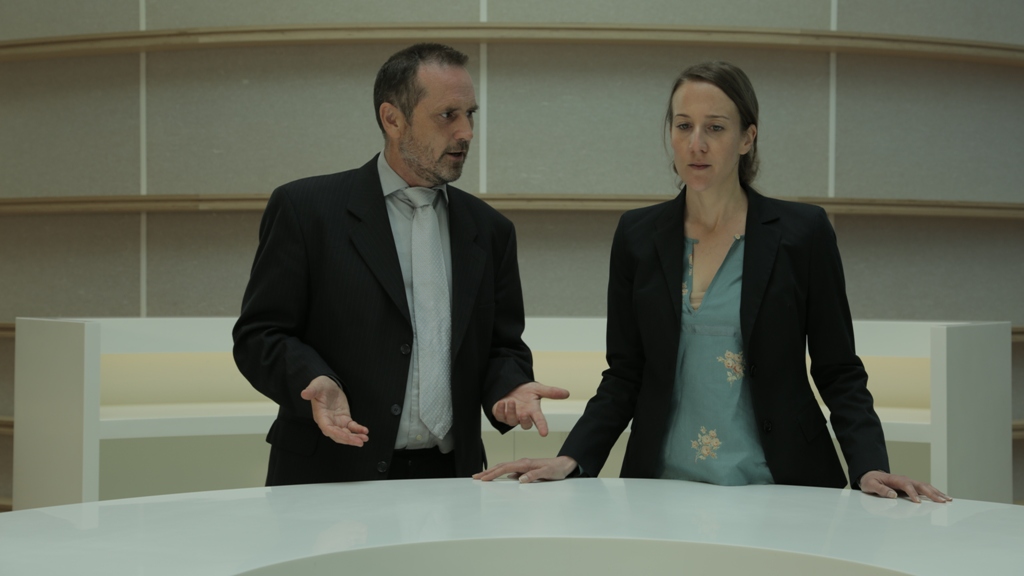
Zachary Formwalt meets Melanie Gilligan

This weekend the complete cyclus of Melanie Gilligan’s The Common Sense is on view at De Appel in Amsterdam, De Hallen in Haarlem and Casco in Utrecht. It is also the final weekend to visit Zachary Formwalt’s Three exchanges, his new show at SMBA. Invited by Metropolis M the two artists met each other in an Amsterdam hotel to discuss their latest work.
Melanie Gilligan: The Common Sense is a narrative video project that I’ve been working on for a while, and that I’m making with a few different institutions in the Netherlands: Casco Office for Design, Art and Theory, De Appel Art Center and De Hallen. I’m about to start shooting the work. It uses a science fiction plot to look at various conditions that we’re faced with today – the ways that distributed economic imperatives drive forms of collective labour in many contemporary businesses. It’s also a meditation on contemporary technological tools that act on our intersubjective relations modes of communication, often bringing with them profound changes to the ways we live, creating new types of relations and also new ways that market logics can be imposed on life today. Since affect plays a large role in the work, neuroscience and its current cultural role is also feature of the piece.
In the world of the story, a technology has been created that overlaps people’s subjectivities to the extent that they can feel the bodily sensations and affective states of the other person. It has a very corporeal and physical level to it, it is not thought reading or anything like that – the technology transmits physical and affective experience. The work relates to the technological world of the present, but also asks what if collective decision making and collective action were suddenly reframed by a change in fundamental aspects of their material conditions?
The idea for the story came out of some thoughts I had about some of the basic conditions of the capitalist economy. What does a commodity do? What does money do? Money mediates the social relationship between the different objects that people want. In the capitalist economy, money is a universal mediator used for dealing with this condition of opposing wants and needs. However, I started thinking what if there was a technology that overlapped the condition of need or want so that one didn’t experience it as solely only one’s own? This technology makes it so that if one person has a need, another person might share that need, if they’re using this technology.
Zachary Formwalt: I’m thinking that it might be useful to describe this technology in relation to money in the sense that you just laid out there—that is, in terms of what it does rather than what it is—as something which allows for certain kinds of movements to take place. Really, money as a technology.
MG If we’re comparing the technology and money, the technology is somewhat like money in that it is an externalization of a relationship in much the same way that money is. With money, you have one commodity and the other, but rather than them needing to be directly traded for one another as they would in a barter, money is a third term between commodities. Money ends up being a kind of externalisation of those relationships of commodities into an abstract third term as we’ve just been discussing. In the film, the process of using this technology process is called “entrainment” and the kind of non-formal word people use for it is “the patch”. The device is worn on the roof of the mouth. It’s this little white, kind of, soft edges, nice design thing. It hooks up to your nervous system and starts transmitting your brainwaves pertaining to, like I say, the corporeal, physical side of experience. Here it is an externalization because it literally makes readable and transmissible something that until its arrival is only ever experienced by one person. It externalizes and makes manifest otherwise intangible things about human experience. Therefore it opens up a new set of conditions to direct instrumentalization. The reason I’m so intent on only focusing on affect here is because affect is actually where the field of neuroscience focuses a lot of its analysis of social behaviour, rather than looking at thought and other less measurable aspects of the human consciousness.
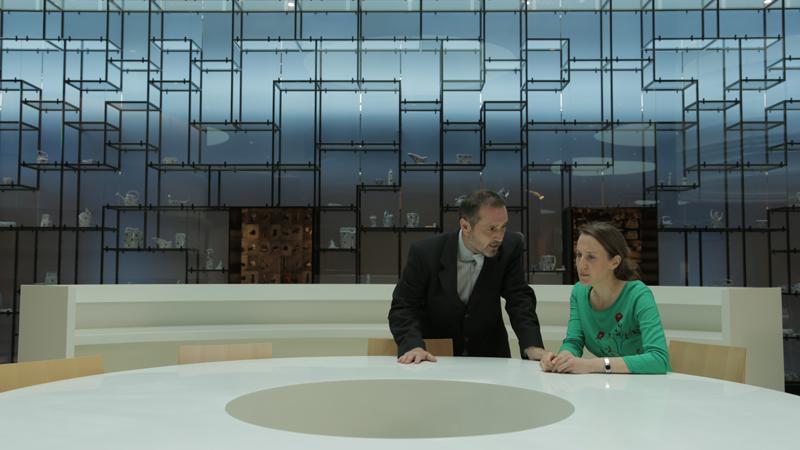
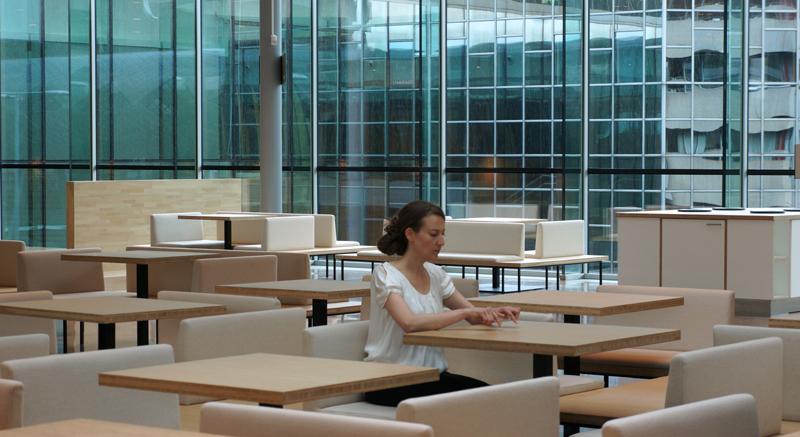
ZF: Would you say affect is something more collective to begin with than thought? Like that thought would be a more individualistic approach?
MG: I think that for centuries, ever since the beginnings of the Enlightenment, Western civilisation has regarded conscious thought that as producing what can then be communicated in language so therefore more social and certainly more universally understandable than emotions and affects. I wrote about this a while ago. The text was called “Affect and Exchange”. Among other things, the text looks at the tendency in left political milieus, and many avant garde artistic milieus of the last century to consider the interior world of subjects as inherently not collective, in a sense because these aren’t shared, they’re experienced individually and focused on as individual. I was writing about Brecht’s approaches to the interior world of his characters. In a moment of more political radical milieus tending towards collectivism, there is this idea of an interior world that’s conventionally opposed to practice. Those ended up being poles, and I think that they were somewhat reproduced throughout the history of how visual art approached the idea of the individual.
In a similar vein, Deleuze and other theorists took an interest in affect because its pre-subjective and very much physical constitution gives it the potential to be pre-personal and non-individual. If you have affect as this pre-personal thing, you somehow get around the problem of the individual subject. Even though I question aspects of this approach in that text, I find these two poles, and the movement between them, is interesting. What I began to think about as I was working on my last film, “Popular Unrest” is that there’s an opposition in thought and subjectivity between, on the one hand, the discursive and narrative aspects of subjectivity understood and expressed predominately through language which in our current historical moment tend to be highly individuated, and on the other hand, affect which is in a lot of ways, something that’s increasingly employed in workplaces in various forms of interactions that don’t actually have a discursive dimension and that doesn’t engage conscious cognition alone.
You could also just say that the world of work and economy are increasingly being defined by the operations of technologies, flows of money and other operational relations. I’m trying to get a grip on these changing parameters of subjects. Then at the same time, dealing with this story of the technology is unwieldy because it’s almost impossible to represent. Impossible in the sense that you can’t show someone’s interior world in any way beyond the means that our bodies have to represent these things, so although I’m trying to represent this new state of development I’m always dealing with conventional means of representating affect and bodily for instance, the expressivity of a face and how it represents.
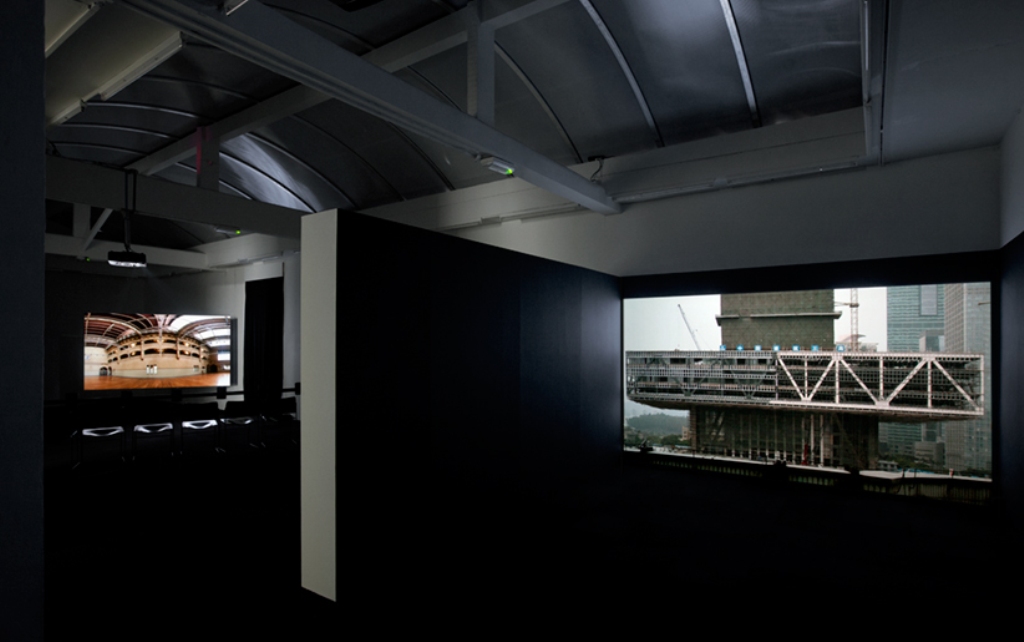
ZF: Okay, so I want to go back to the 19th century, and this might begin to relate, if somewhat obscurely, to what you were talking about in relation to the notion of affect and the kind of historical legacy of that within leftist thought. This idea that certain strategies get associated with certain politics. The film that I’m working on at the moment is set inside of the Beurs van Berlage in Amsterdam, which was built by this architect who was a socialist, H.P. Berlage. Already there is a kind of problem in the architect’s descriptions, and especially his aesthetic advisor, this guy Albert Verwey, who talks about this building as being built for the end of capitalism. We’re building it now, but it will really come into its own once capitalism is over. There was a lot of criticism of this reading of the building as being a representation of the working people, of the proletariat, at the time, because how can you make a stock exchange,
this kind of heart of capitalism
MG: And it’s like something that the working class would have had no access to in anyway.
ZF: Yeah, so it was really only through this idea of a projection into a future moment when capitalism would be over and this building would become a house for the people.
The other little story that I’m trying to relate to that somehow, is about Leland Stanford, the railroad tycoon, governor of California, and later senator for California in the US Congress in the middle to late 19th century. The thing about Stanford is that he was your kind of prototypical, railroad tycoon robber baron capitalist. Made a fortune and became, in a way, a prototype for this later Bill Gates style capitalist.
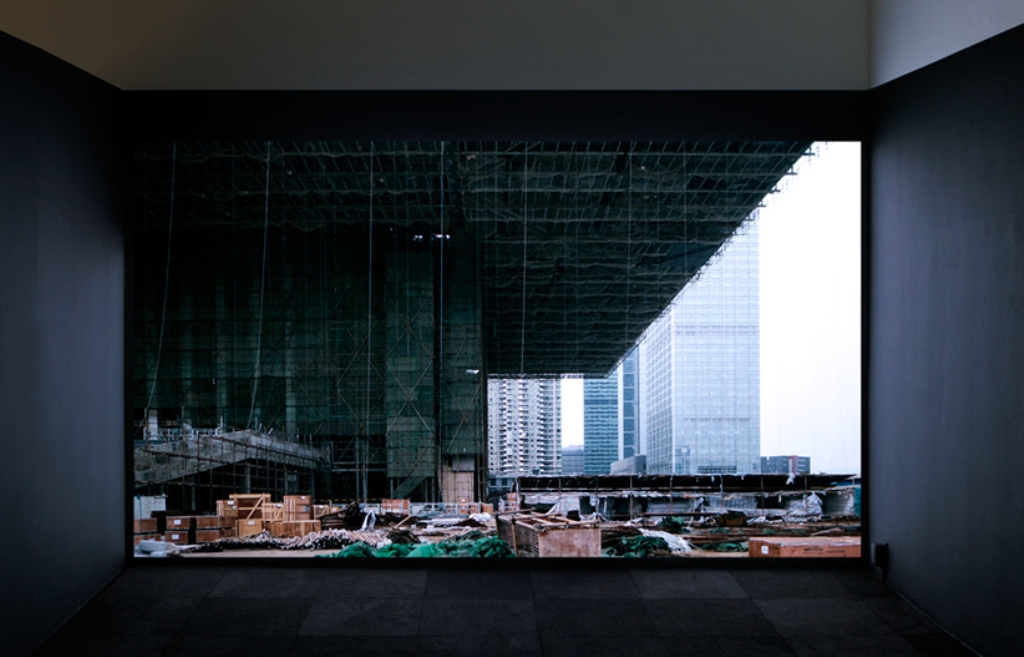
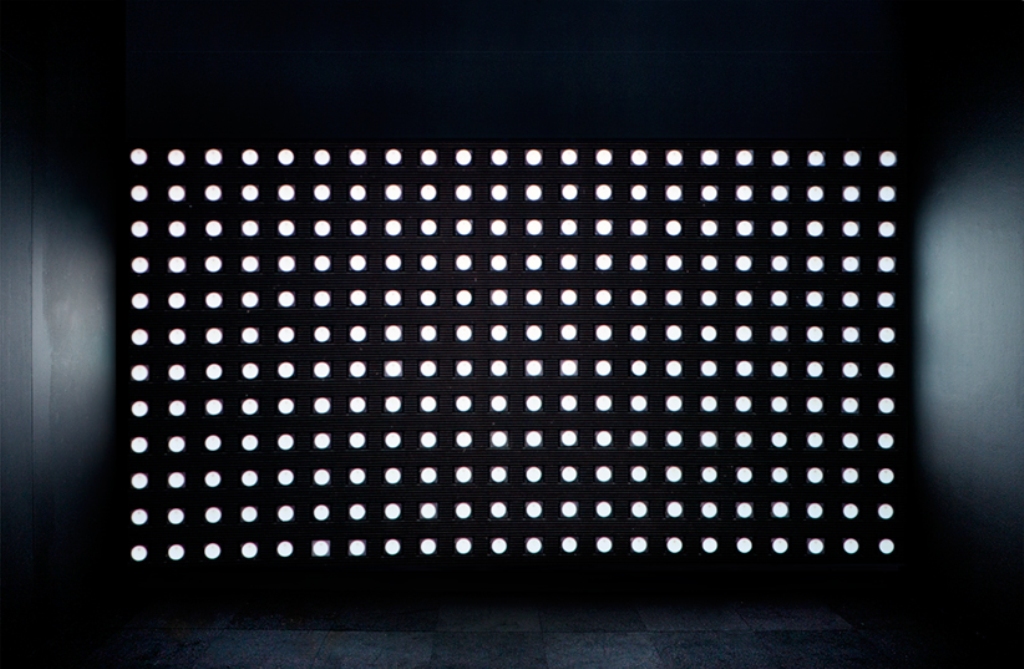
MG: How so?
ZF: Well, he set up Stanford University.
MG: Oh so you mean his philanthropy?
ZF: Yes, exactly. His first step into philanthropy was through a commission that he made to Eadweard Muybridge to produce these famous images of the horse, the instantaneous photography sequences of the horse floating over the ground. This was, you know, seen as a kind of scientific endeavour on his part, and as such, a philanthropic enterprise. But what’s really interesting about Stanford, and especially in relation to Berlage, is that they had these, kind of, reciprocal roles in relation to what could be seen as being associated with a right, status quo, capitalist position, and maybe a left, progressive, socialist position. Berlage builds this monument to capitalism, and in a way names it a monument to the people of the future. Stanford actually is this, as capitalist as it gets, entrepreneur and then as a senator he develops this legislation—he puts it forward, it doesn’t actually get through— but it was legislation that would provide the legal framework for associated labour cooperatives. In some ways you could say that this came out of capital’s own logic in that Stanford had witnessed and survived at least one very serious railway strike, so he could see the power of organised labour, and he was responding to this. But at the same time, this was something that would have been much more effective in advancing a kind of progressive agenda than building a stock exchange that would only later become a house for the people. I think there’s something very interesting about these reciprocal positions of the socialist architect building a key part of the capitalist infrastructure, and this capitalist politician who is trying to build this infrastructure for the legal existence of socialism.

MG: We have this question that was raised by Domeniek about systems, or, the system.
ZF: Yes, “the system”.
MG: We were both questioning the phrasing of “the system”, while also acknowledging that we’re interested in systems. From where we’ve gotten to right now, I can’t help thinking that, while it’s probably important for both of our practices to be able to address aspects of capitalist systems, and say “capital does this…”, at the same time one has to do some intense thinking to consider the level of both the particular and the abstract within the condition of living in capitalism. One must think on one level about capital as this total system that actually has outcomes, and has its own agency to a certain extent, in that capital has certain system behaviours (in the sense that complexity theory might talk about a system’s behaviour) and system needs (e.g. a tendency to move towards capital’s expansion). At the same time, each one of us as particular human beings are able to be seeing out that expansion without any awareness of it, through the pursuit of our own self-interest, because actually we live in situations where we’re having to fight for our survival more and more.
I think that like for a long time, especially in the academic world, in a questioning of totalities and universalities, the discussion of capital as an entity became a problem precisely because it was felt that such thinking didn’t adequately take on the particulars of specific situations and individuals. However, barring that sort of discussion is a problem, because we do need to be talking about how capital functions as a totality, which it does, and its contemporary manifestation is based on its ability to actually cohereand incoporate as a relation of many particulars at once. Having an ability to address how that framework works is essential, and then at the same time to not use that framework to somehow obscure the particular. Do you see what I mean?
ZF: Yes, I think it’s problematic, this notion of abstraction, which is really crucial to be able to think about how capital operates, in totality. Once you have made the abstraction, when you start talking about capital as an entity which acts, then, you know, how do you get-, how do you step back down from that? Can you actually do that without just adopting another position? I think oftentimes you can talk about both positions but it’s very difficult to mediate the relation between them.
MG: In a sense, much of my work has tried to tackle this problem because I think this relation between the two levels is crucial. I do actually try to get a view on larger dynamics. That’s why I use narrative, because it’s a way to understand and frame certain types of dynamics happening in the world. Analyses that is also not analysis. By using narrative I am kind of stepping instead towards setting various trains of narrative into motion and in that process I have to deal with, “What would happen next?” “how would these…” There are a lot of unforeseen processes of instantiation happening there. A lot of them are somewhat out of my control, when I actually have orchestrate it in visible space which ends up changing and completely rewriting a lot of things. I think that this translation into narrative that, on some level, already puts it out into terrain that I’m not necessarily able to determine. But I still am still nevertheless trying to give a view on larger frameworks of how economies or processes are playing out.
You talked about some ideas around your project. Can you talk a bit more specifically about how you make your films?
ZF: With the two films that make up the first two parts of a trilogy that will be shown in November at the SMBA, both of them kind of originated in this site—the construction site of the Shenzhen Stock Exchange. I was given the opportunity to do some filming there and that was kind of the point of departure. Initially, I was looking a lot at the specific situation of China’s economy and the whole history of that since Deng Xiaoping came in and made Shenzhen into the first of China’s Special Economic Zones. Shenzhen is very much linked to that whole project of China’s “opening up”. And I thought that that would be an interesting thing to deal with. In the end, I ended up—through the paths of abstraction, I guess—not really dealing with that local situation very much at all. I felt like actually that site and the construction of that site had more to do with something that in a way is only very tangentially linked to the actual place where it exists. The first film is called “Unsupported Transit”. In it there is this story being told over these images of the construction site in Shenzhen that starts with Leland Stanford commissioning Eadweard Muybridge to make these images of the horse. It then goes up to-,
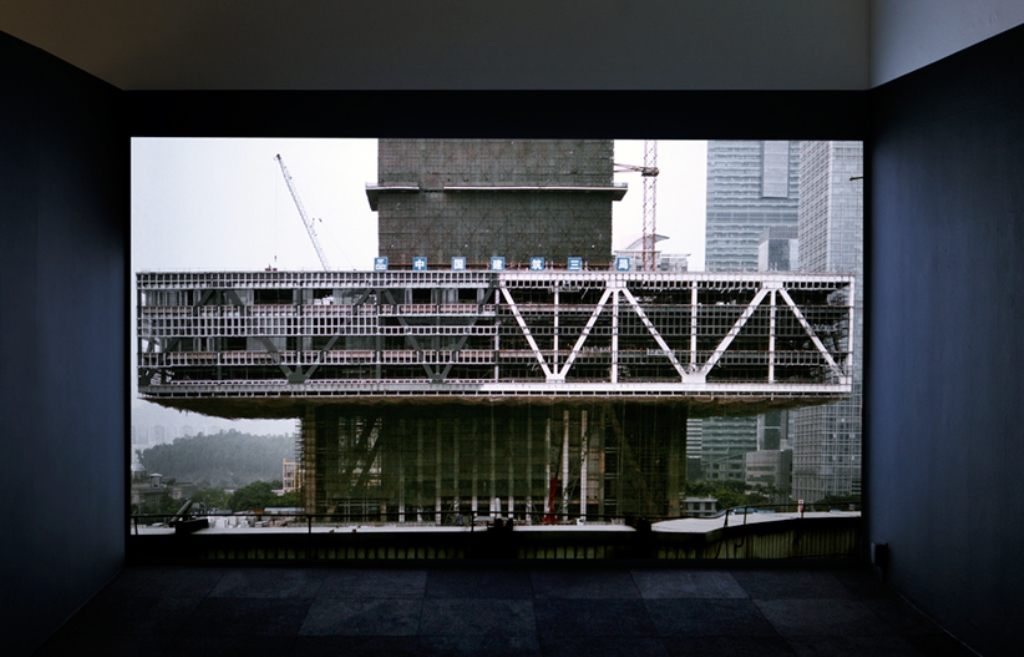
MG: God, I just realised how interesting that is. Stanford, a kind of robber baron figure who looks to Muybridge for a delineation or sort of stripping away, and quantifation of, space and time in relationship to human movement. Which is obviously very much related to labour and that period before Taylorism begins, after the industrial revolution had progressed for some time. It’s taking that figure, either human or animal, and placing it in a framework, you know, such as transposing it onto a Cartesian grid.
ZF: Yes! And it literally is a Cartesian grid later on. I mean the figures are posed in front of these grid backdrops. With these later Muybridge motion studies there does really seem to be this idea that if you strip anything down to its most basic kind of point then you will be able to understand how this thing moves.
MG: Yes, and that general belief that various means of measurement can be imposed on all aspects of life. Which is very much inherent in an understanding of the world that submits everything to the measurement of value.
MG: Yes, it’s as if in that gesture is one that tries to capture value that’s not particularly quantifiable. Like imposing a measure onto labour (such as labour-time) which doesn’t really capture the majority of what human activity is, when people do things that are called labour.
ZF: There’s one example I can think of in particular here, with these Muybridge images, which also relates to some of Berlage’s concerns. A lot of the, sort of, symbolics of organised labour for Berlage were related to these massive brick walls, so that you had many small bricks that made this kind of, you know, singular stable structure. So there is, in one of these late Muybridge motion studies, when he was using the grid backdrops and all that stuff, a bricklayer who has come in and is going to do some bricklaying. The bricklayer is completely naked except for having this little thong on. Why in the world would that bricklayer—how could he be comfortable enough to do his work in the way he would “naturally” do it at work in this strange situation of being naked in front of a grid? It’s like you have this very strange image of two different, really incompatible, ideas of getting down to, like, the most basic element in this bricklayer motion study.
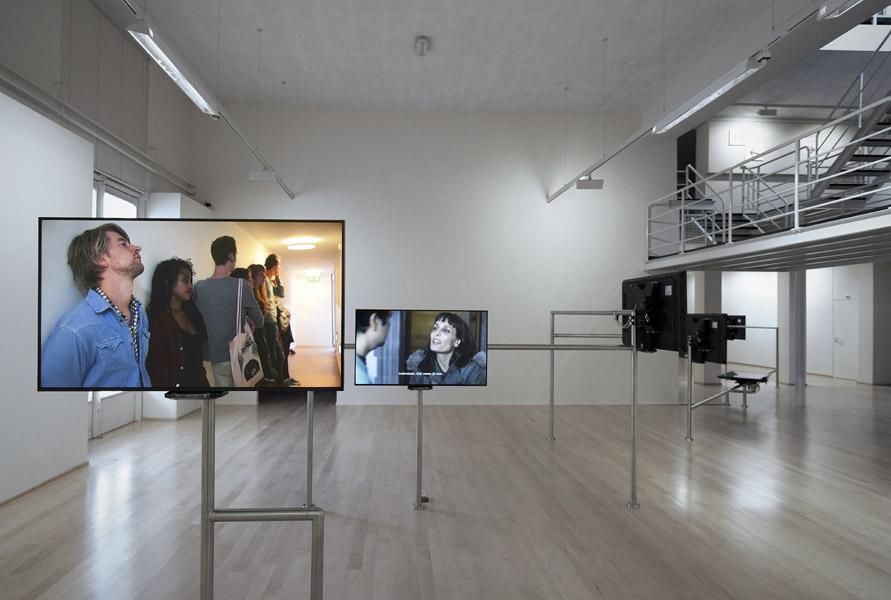
MG: Yes, totally. That’s what I was just thinking. They were both appealing to some form of universalism but for different reasons. One for the sake of an idea of scientific process, and the other one for the idea of some kind of-, well, I won’t put words into Berlage’s mouth, but I’m imagining some idea of human collectivity.
ZF: To quickly get back to the relation between these two sites, the Shenzhen Stock Exchange and the Beurs van Berlage, I think that they both have this kind of fracture between their symbolic function and their real infrastructural role as spaces for exchange. In a way, the Shenzhen Stock Exchange building is mostly unnecessary. It’s a huge building and the only part that is really needed is the server farm. Only a couple floors of this 40-something storey structure. The rest of it is just symbolic. It is built as this kind of symbol of capitalism.
MG: In terms of actual buildings versus this constant dematerialisation that’s happening in the world of finance, obviously with high frequency trading, there’s this movement further from the world of material. I mean material goods, material spaces, but also the movement beyond the kind of space and time of human interrelation. High Frequency Trading is an example writ large of how this process of exchange come to stand over and against us, as Marx described. There are these processes put into play, but the actual ramifications and implications end up being incredibly extensive and sometimes. It relates back for me to this relationship between what I’ve been recently calling in my work the systemic and the particular. At the same time it is really hard to represent such things through the visual arts. So, again returning to this idea that there is a form. There are forms of‘non-representational’ and non-discursive forms of activity and players within the-, I keep wanting to say ‘agency’ but it’s not agency. Maybe both of us are trying to grapple a little bit with those things that are actually really, really hard to represent.
ZF: I think there are these historical cycles and that at certain moments things become less accessible to discourse. I think we are definitely in one of these moments where you have just a crazy amount of discourse but very little agency within that. I think that in a way the shift in the architecture of exchanges is, sort of, emblematic of it. I don’t think it’s the thing that is bringing about this change, but it’s definitely part of that change that we are undergoing right now. So, when you get rid of the exchange halls and instead you have server farms connected by, you know, these crazy hi-speed cables. When less money is spent on building the new buildings than the super fast cable that connects the buildings. These kind of things are not aspects of dematerialisation. They’re just part of a shift in where the materialisation is happening.
Zachary Formwalt – Three Exchanges
SMBA, Amsterdam
27 november 2014 – 25 januari 2015
Melanie Gilligan, The Common Sense
Casco Utrecht 14.11 – 25.1.2015
De Hallen Haarlem 13.12 – 1.3.2015
De Appel, Amsterdam 24.1 – 8.3.2015
All images by Gert Jan van Rooij (except the videostills)
A DUTCH TRANSLATION OF THIS CONVERSATION WAS PUBLISHED IN METROPOLIS M No 5-2014 COMPLEXITY


